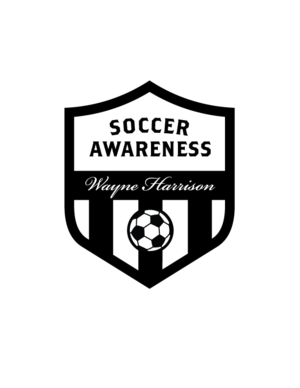Fixing Team Attacking Shape
/The following post is a section from Soccer Awareness eBook 30: Common Mistakes To Correct In The 11 v 11 And How To Fix Them Before They Start. This ebook is 179 pages outlining 29 different real game issues and how they can be fixed before they happen. This is a different way to look at the game, rather than highlighting what to do well; and how to do it, we work back to show what often goes wrong and then how we can fix it. These are many situations we have found happening in ALL levels of games. Preview Here
Attacking Shape is often WAY TOO Narrow
Players often don’t use the full size of the field and set up in a more defensively positioned team shape when they have the ball and are attacking. This means its easier to stop them attacking because the spaces to cover are much smaller for the opponents..
This is a common one, we waste 20 yards or more of width which means it is easy for opponents to mark us. This is a major concern we need to fix, and it must be practiced constantly to make it instinctive in how we set up offensively.
Attacking Shape Using Full Width
This is the attacking team shape for a 1-4-2-3-1. Zone 14 is the area between the opponents back three or four and their midfield. Setting up as WIDE and we can create much more space between opponents so we will be much harder to defend against.
Attacking Shape is Often Way Too Narrow
Look at the distances between each defensive player based on the positioning of our so called attacking team.
Attacking Shape Using Full Width
Now compare the distances between each defensive player and you will see this time they have MUCH MORE space to cover between each of our players, so we have far more room to play in. If the defensive team compress, then we have much more space wide.
Attacking Shape is Often Too Narrow to Build Out the Back
Look at the distances between each defensive player based on the positioning of our attacking team. It is difficult to play through such small spacing.
Attacking Shape Using Full Width
Now compare the distances between each defensive opponent and you will see they have MUCH MORE space between each of our players, so we have far more room to play in.
Can be difficult for younger teams to spread out this much as they can't kick the ball that far. Just adjust accordingly.
UPDATED AND IMPROVED
Identifying and Solving Common Real Game Situation Problems in the Training Environment
This is a different way to look at the game, rather than highlighting what to do well; and how to do it, we work back to show what often goes wrong and then how we can fix it. These are many situations we have found happening in ALL levels of games.
Some may seem so insignificant we don’t see or realize the importance of them, but they may be the catalyst to a bigger problem in the next phase of play. How many of these problems do YOU experience with your team?
This eBook is 184 pages outlining 30 different real game issues and how they can be fixed before they happen. Interactive table of contents links to each section.


















